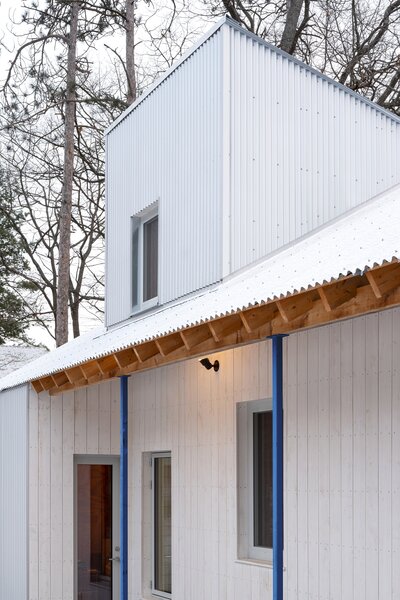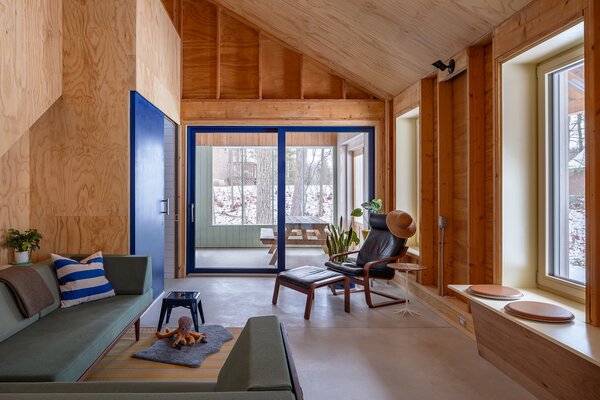A Firm Specializing in Public Work Takes on a Private Prefab Home to Test Methods
Workshop Architecture rarely builds single-family houses, but they made an exception to try out Passive House-standard wall and roof panels.

Workshop Architecture rarely builds single-family houses, but they made an exception to try out Passive House-standard wall and roof panels.
Welcome to Prefab Profiles, an ongoing series of interviews with people transforming how we build houses. From prefab tiny houses and modular cabin kits to entire homes ready to ship, their projects represent some of the best ideas in the industry. Do you know a prefab brand that should be on our radar? Get in touch!
Single-family homes are not typically on the docket for Workshop Architecture. Rather, the Toronto-based firm specializes in public work and social housing with an emphasis on equity and sustainability. But this private home presented an opportunity to test out prefabrication construction methods that could later be applied to larger scale public work.
Dubbed the Unfinished House for its restrained approach to aesthetics, material reduction, and budget, the home uses Passive House-standard prefabricated wall and roof panels. While the 1,400-square-foot pilot project leveraged off-site construction methods, the architects stress that it was custom designed for the site. Here, the studio explains why they made an exception for the Unfinished House and what’s next for the firm.

Located in Ontario, the two-bed, two-bath home totals 1,400 square feet. It utilizes a high performance, prefabricated envelope—a technique the firm is now adapting for larger projects.
Photo by Scott Norsworthy
Beyond the traditional benefits, why was prefab the preferred delivery method for the Unfinished House?
This house is custom designed for its site. We used panelized prefabrication. With this method, instead of being framed on-site, the house comes flat-packed on a truck, a jigsaw puzzle of 8- to 16-foot-wide wall and roof pieces that have the structure, insulation and vapor barrier, sheathing, windows, and exterior doors all preassembled.
We were interested in collaborating with the manufacturer during the design stage to work out everything in more detail than you usually can on a building site. Simple Life Homes, the prefab panel manufacturer, uses a 3-D BIM (Building Information Model) and we also work this way. During the design stage we went back and forth between architect and manufacturer with the 3-D model.
All the framing elements were modeled, which allowed us to consider both their placement aesthetically and also how to achieve air barrier continuity at panel joints (where panels meet) in three dimensions. Plumbing and electrical services were grouped into areas to be concealed, complete with in-slab conduit stubs, to avoid passing through areas of visual-grade exposed framing.

Workshop collaborated closely with Simple Life Homes, a prefab panel manufacturer, to complete the residence.
Photo by Scott Norsworthy

The home is meant to appear raw and unvarnished, with self-finishing materials such as concrete floors and intentionally exposed framing.
Photo by Scott Norsworthy
See the full story on Dwell.com: A Firm Specializing in Public Work Takes on a Private Prefab Home to Test Methods
Related stories:
